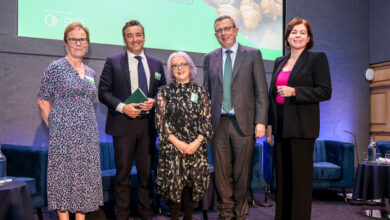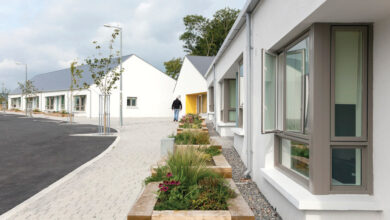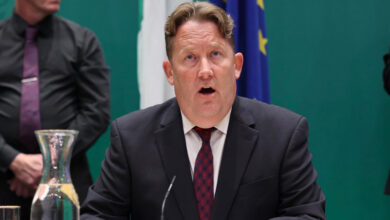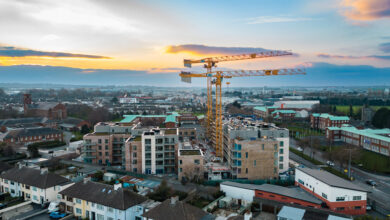Meeting the demand for social housing
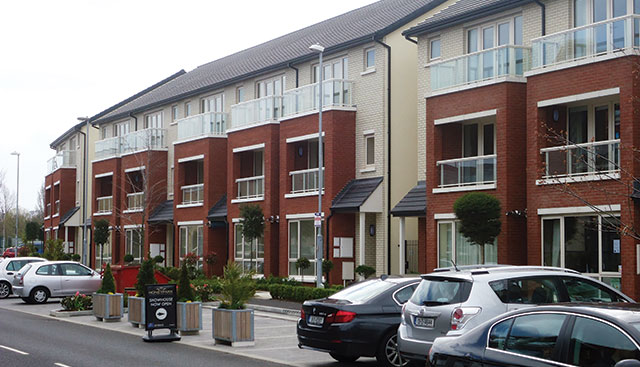
An overview of the progress made to date on the Social Housing 2020 Strategy.
Over the course of the economic downturn government funding for social housing declined significantly despite the rising demand for stock. In 2008 the budget for social housing stood at €1.7 billion but in 2014 this figure fell to €597 million. The introduction of the Social Housing Strategy 2015-2020 bucked this trend with a pledge to invest €4 billion out to 2020.
The strategy recognizes the need for access to affordable housing but also takes into account its location – it must be provided in a sustainable community. One year on from the strategy’s announcement just how much has been achieved?
Capital programmes
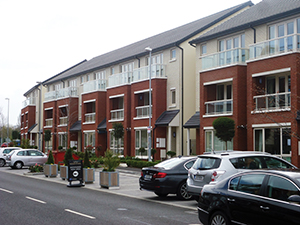 In 2015 almost €800 million was invested across a range of housing programmes. Overall, social housing funding increased in excess of €200 million. This increase in investment allowed for a significant expansion in social housing provision.
In 2015 almost €800 million was invested across a range of housing programmes. Overall, social housing funding increased in excess of €200 million. This increase in investment allowed for a significant expansion in social housing provision.
2015 was the first year since the down-turn that funding was approved for significant new construction of direct-build local authority and Approved Housing Body (AHB) housing. Funding has been approved for 200 projects that will deliver 5,350 units. This is made up of 3,250 units delivered by local authority direct build, 1,500 units delivered via Private Public Partnership (PPP) and 600 units to be built by AHB under the Social Housing Current Expenditure Programme. The planned delivery of 3,250 units by local authorities is part of the overall target that will see 12,100 units delivered under the Capital programme by the end of 2020. However, there will be a two to three year time lag between the approval and delivery of construction projects, so real progress on the delivery of construction units is not expected until 2017.
Given this time lag the acquisitions programme plays a vital role in the immediate supply of social housing and was particularly significant in 2015 when over 1,000 homes were acquired by local authorities. Acquisitions represent good value particularly as they are available as homes for families on the social housing list almost immediately and provided for a parallel stream of supply as the construction programme begins to build momentum.
Recognising that time lag is an issue, measures were taken in 2015 to increase the capacity of local authorities and reduce the administrative time-line in delivering capital projects. These provisions include the sanctioning of 420 housing posts in local authorities to help build capacity as the construction programme moves forward and the introduction of a new national procurement framework for professional services so local authorities can source architects, engineers and quantity surveyors.
Regeneration
Optimisation of existing stock also features prominently in the strategy. Support for refurbishment has increased significantly in 2015 with €33 million allocated to bring 2,758 vacant and boarded-up social housing units back into productive use. The Capital Assistance Scheme has also provided funding for housing bodies to provide accommodation for persons with specific categories of housing need. In 2015 the scheme resulted in the delivery of 1,000 units with roughly 500 units delivered through construction and 500 delivered through acquisitions. In total, approximately 350 Capital Assistance Scheme units were delivered in 2015.
AHBs have a central role to play in the provision of social housing. Throughout 2015, the department and housing agency worked closely with the Irish Council for Social Housing and the
Co-operative Housing Ireland. A set of recommendations related to streamlining the existing current funding scheme were approved and these measures include the ability of AHBs to drawdown funding at an accelerated rate to assist with the costs of professional fees.
Throughout the strategy’s life span, Public Private Partnerships will deliver 1,500 units and in 2015 the first bundle of PPP projects were identified, appraised and selected. Six sites have been identified and will deliver over 500 units to the Greater Dublin Area. Similarly, the provision of social housing in new private developments (Part V) has been set at 10 per cent for developments of more than nine units. Unlike the previous Part V regime, the emphasis is now on the provision of new social housing units within new developments with the option of a cash payment in lieu of providing units removed.
The regeneration programme targets the country’s most disadvantaged communities and takes a broad focus, beyond the remediation of the physical environment, delivering social and economic regeneration of the areas concerned. Under this programme, funding of €50 million was invested in projects across the country during 2015, which included the delivery of over 100 new social housing units.
Current expenditure programmes
The Social Housing Current Expenditure Programme (SHCEP) has delivered 1,450 units in 2015. These units were delivered in a variety of ways and local authorities were encouraged to explore and use all methods available to them. While the main method of delivery has been through purchasing and leasing already completed units, the programme also supports approved housing bodies in the construction of units which are then made available for social housing under leased arrangements. Approval has been given for almost 600 further units to be constructed by approved housing bodies with financial support from the programme.
2015 was the first full year of the Housing Assistance Payment (HAP) scheme and 5,680 households were supported by the scheme. Roughly 6,700 households have been supported by the scheme since September 2014, similarly a total of 1,800 tenancies were delivered in 2015 under the rental accommodation scheme that caters for the accommodation needs of persons who are in receipt of long-term rent supplement.
NAMA continued to play an important part in the delivery of social housing in 2015. An additional 932 units were provided during the year, including 615 units which were delivered and 317 units that were contracted for delivery at a later date. This brings the overall number of units secured by the National Asset Management Agency to 2,000 at the end of 2015 and in many instances these units were made available through a special purpose vehicle and approved housing bodies.
NAMA has invested €150 million to date in acquiring these units – in addition to receiving €70 million remediating and completing properties, many of which were unfinished housing developments.
Homelessness
Homelessness may only affect 0.2 per cent of the population but it represents a traumatic experience. Addressing the imbalances in the housing market overall will be a key dimension to tackling homelessness. In 2015, €64.77 million was provided to housing authorities for homeless services. During a week in November 2015, 3,615 adults utilised emergency accommodation. By the end of the third quarter of 2015, a total of 1,645 homeless individuals had been allocated to independent permanent tenancies nationally this is an increase of 10 per cent in exits from homelessness when compared with 2014.
To provide housing for homeless families, the government approved the delivery of 500 units of rapid housing for families across Dublin. These units, which will be located in Ballymun, Dublin City and across the four Dublin local authorities will provide emergency accommodation in the first instance and facilitate a coordinated needs assessment and support planning for access to all required services, including welfare, health and housing services.
The delivery of 13,000 new units throughout 2015 is a good start but with many families still waiting for a house and others struggling in homelessness or facing the very real prospect of it, it is clear that there is still much to do to address Ireland’s social housing needs.

